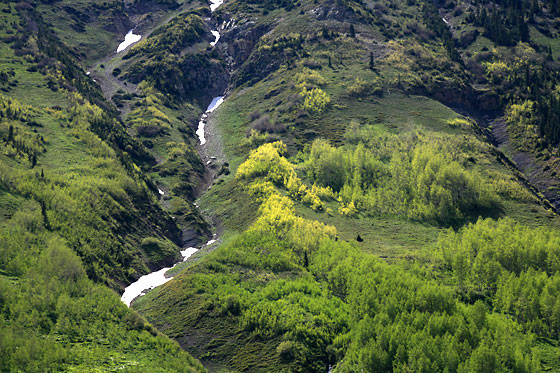Colorado
Species traits and the structure of pollination webs

Fig. 1 Alpine vegetatation in the Rocky Mountains, Colorado, USA
Pollination of flowers by insects is a vital natural process, important for humanity. In studying pollination we wish to understand what factors determine which insects will visit which flowers. My previous study of a community of plants and pollinators in southern Spain revealed that who visits whom could be explained surprisingly well by the combination of two simple mechanisms. First, the nectar that the pollinators search for in flowers is often deeply hidden, and only pollinators with tongues longer than the threshold set by nectar depth will bother to visit a given flower with deep nectar. Second, the visitors to a given flower type will be a representative sample of all insect species with long enough tongues, and will reflect the relative abundances of these different species, some of which are rare and others common. I now wish to extend this finding to the very different ecological communities in the Rocky Mountains, to test whether I can again predict who visits whom using simple rules. Repeating the Spanish study at the RMBL will also allow me to explore additional factors that may constrain insects searching for pollen as a food reward, rather than nectar, and to see if rates of visitation to flowers can be explained by flower and insect characteristics. More broadly, this research will help biologists to understand fundamental patterns in pollination, an important practical goal.
RMBL Research Plan Martina Stang
